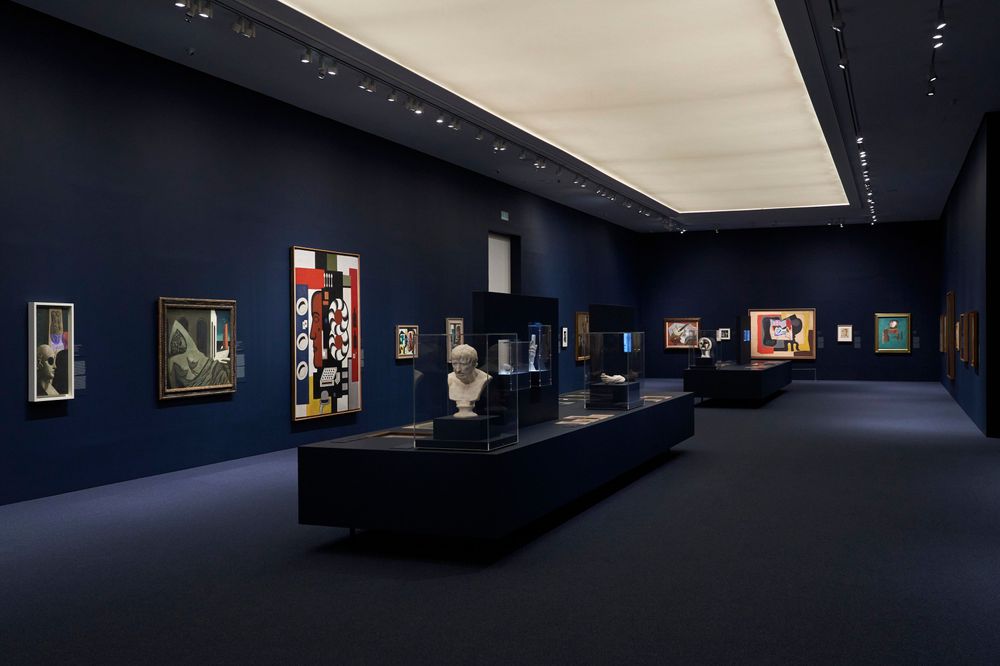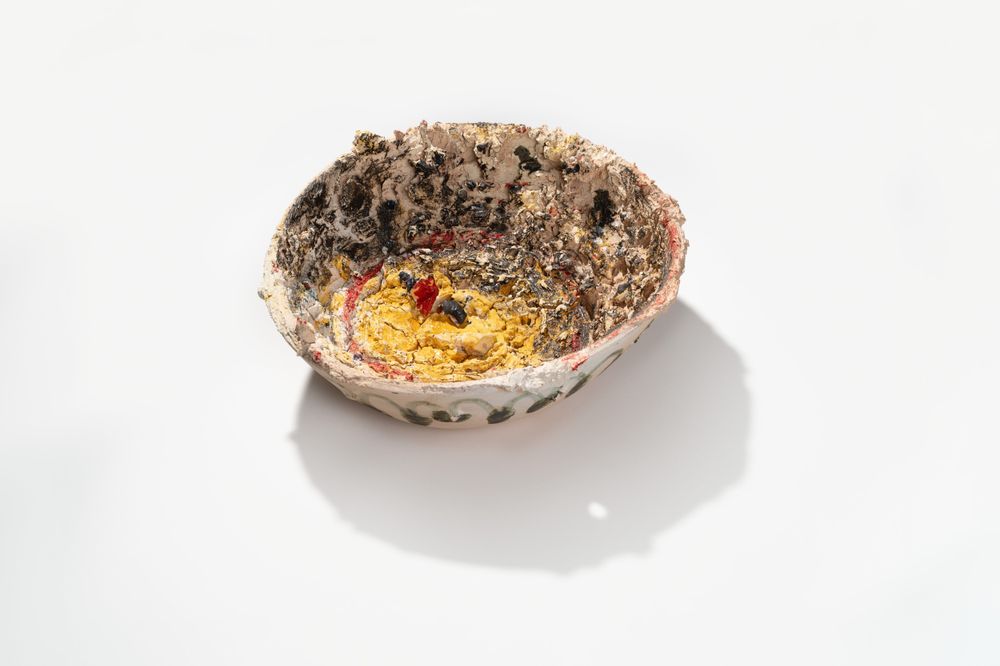08/10/201220/01/2013
«Lobster and Cat»
The invited work
Lobster and Cat attests to the artist’s unbreakable energy during the last few years of Pablo Picasso. The oil painting demonstrates his skill at depicting apparently humorous subjects in a serious manner: both animals are, potentially, as innocent as they are dangerous.
The cat looks threatening, and is confronted by a crustacean in attack mode. Some art critics point out that the subject’s predecessor was La Raie (The Skate, 1728, Musée du Louvre, Paris), by French artist Jean-Baptiste-Simeón Chardin. The surprising thing about Picasso’s painting is that he is able to retain the humorous anecdote of an eighteenth-century painting while focussing on and highlighting the encounter between the cat and the lobster, in an effective metaphor of aggression and defence, both provoked by fear. Picasso worked a number of times on transforming the monumental to the miniature, the trifling to the significant, and vice versa.
Because of the subject matter of the painting, it was decided to hang the painting in Room XI of Museo Picasso Málaga. Known informally among MPM staff as the Bestiary Room, the works in it illustrate the importance of animals in Picasso’s life and in his paintings.
The work belongs to the Thannhauser Collection of the Solomon R. Guggenheim Museum in New York. These holdings were a generous gift from Justin K. Thannhauser (1892–1976), the son of the art dealer and gallerist Heinrich Thannhauser, who founded the Moderne Galerie in Munich in 1909. In 1963, Justin K. Thannhauser donated a major collection of French modern art to the Guggenheim, including over 30 works by Pablo Picasso. After the death of the benefactor, his widow made further donations between 1981 and 1991. This collection covered the period immediately prior to that of the Solomon R. Guggenheim Museum’s own founding collection, and this enabled the museum to offer its visitors a complete overview of the history of modern art, from the 19th century to the present day.
Lobster and Cat became part of the Solomon R. Guggenheim Museum collection in 1991 thanks to the legacy of Hilde Thannhauser, the second wife of Justin K. Thannhauser, who had worked with his father, Heinrich, at the famous Munich gallery that bore his name. Strong supporters of the Avant-garde art movement with their excellent and eclectic programme of exhibitions, the Thannhausers put on the first major Pablo Picasso retrospective in 1913, at their Moderne Galerie. This was the start of a close relationship between Justin K. Thannhauser and the artist which was to last until Picasso’s death in 1973.
The top left-hand corner of Lobster and Cat carries a dedication, “Pour Justin”, signed by his “ami”, Picasso. Under the terms of the Thannhauser legacy, the holdings are to be on display almost permanently in the galleries devoted to the collection at the museum building in New York. This is why Lobster and Cat has very rarely been seen outside New York, and this was the first time that it was shown in Spain.
The Guest Museum project has been very well received by both the public and the art galleries that have been invited to submit a work by Pablo Picasso on temporary loan. The aim is to enhance the overview provided by the MPM permanent collection, which comprises 233 works that encompass Picasso’s revolutionary innovations as well as the wide range of styles, materials and techniques that he mastered.



